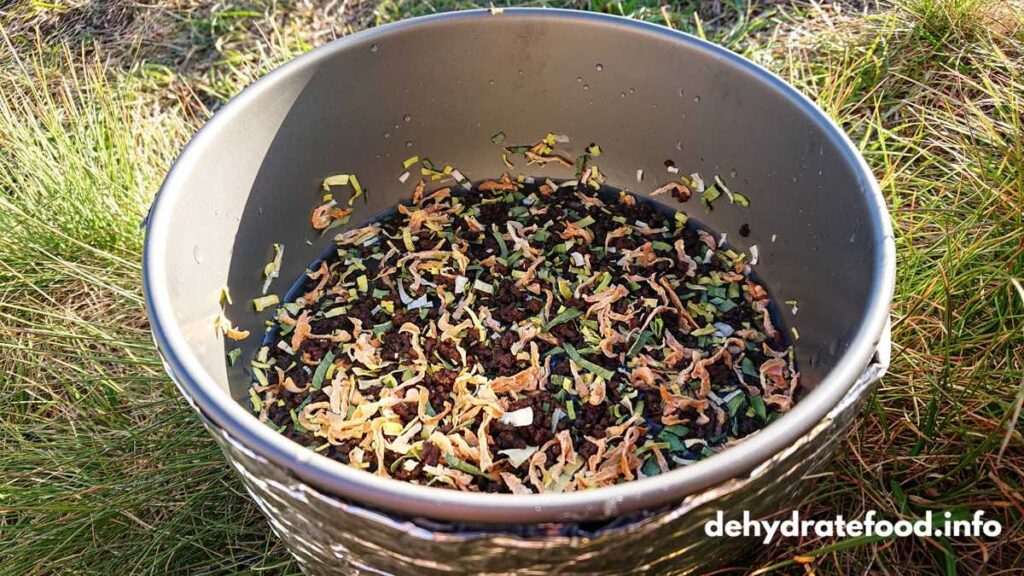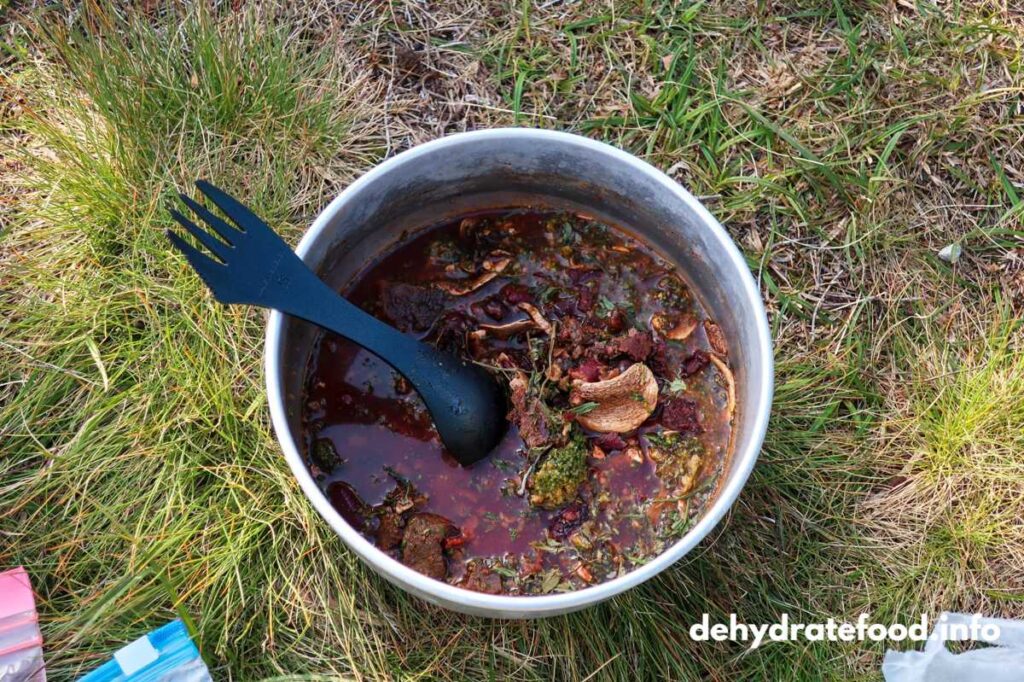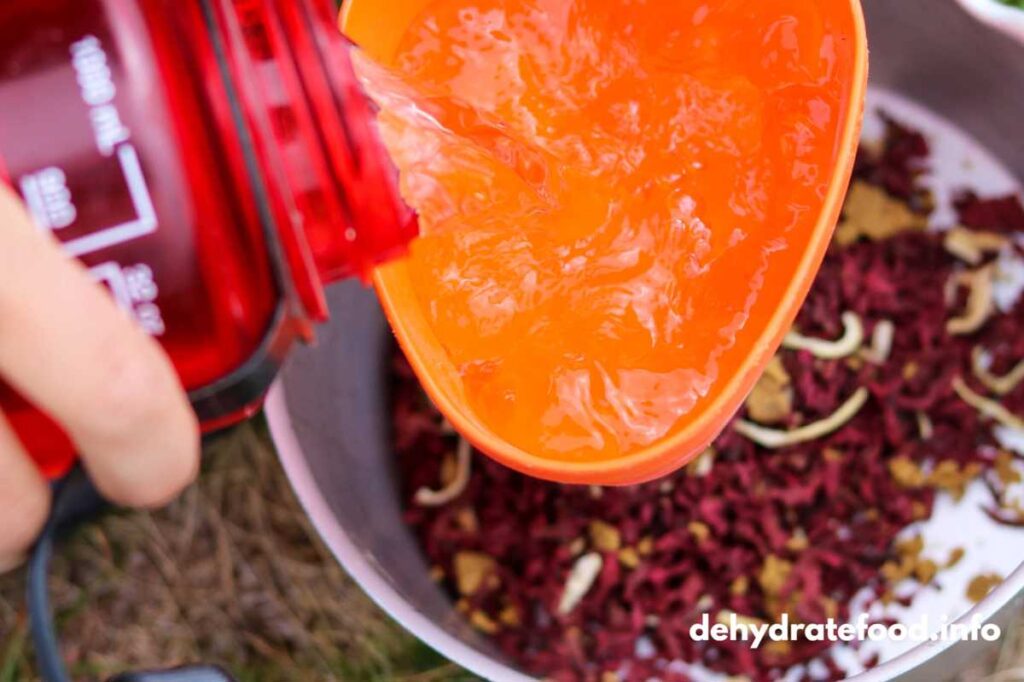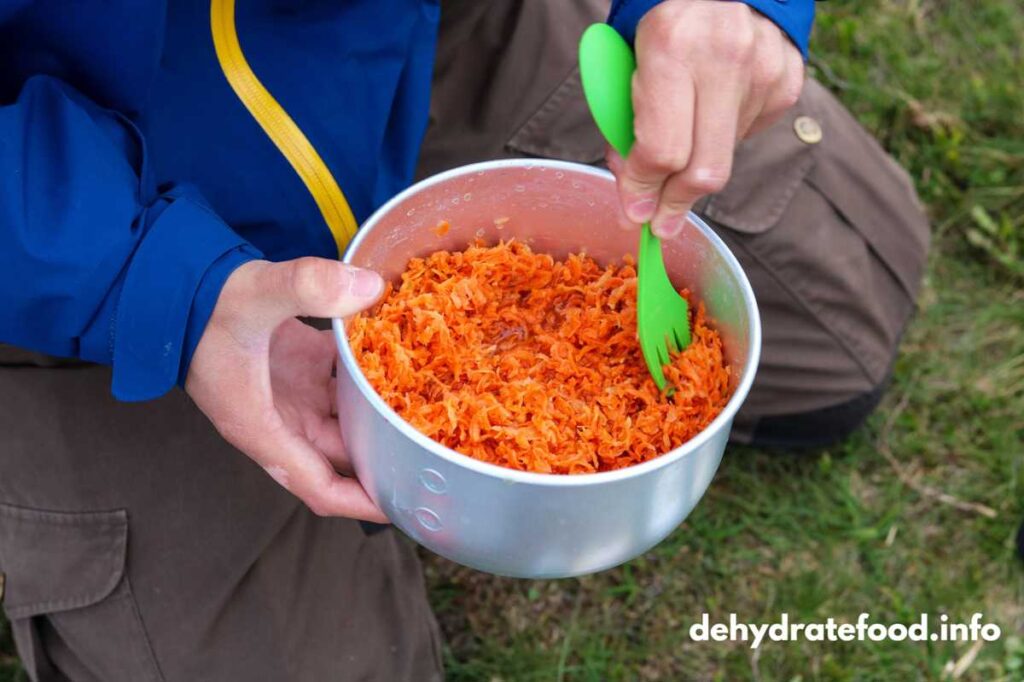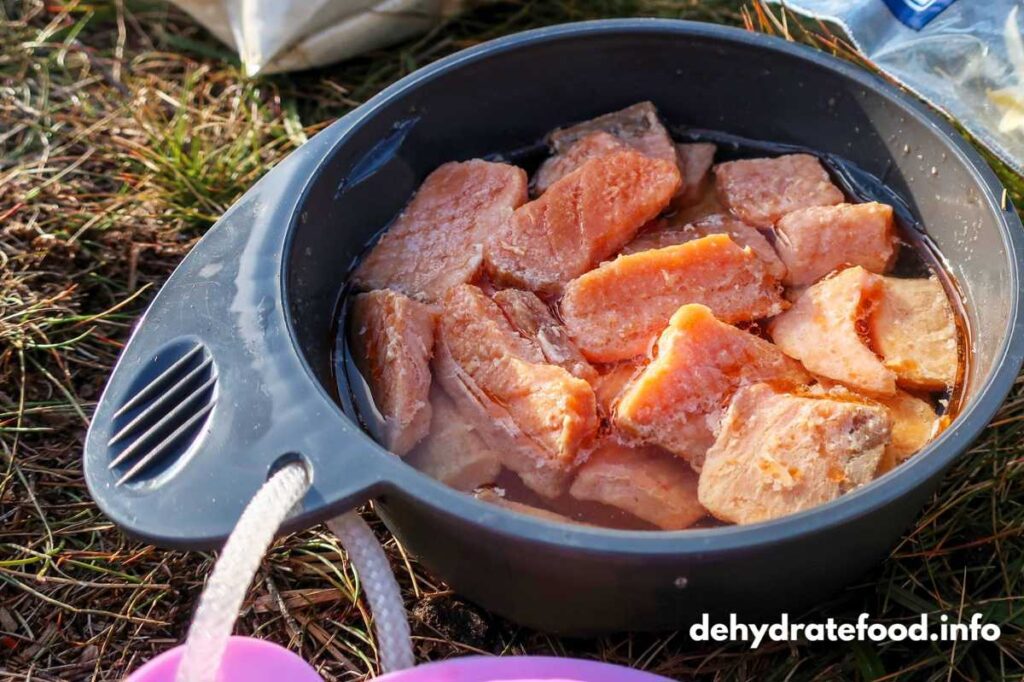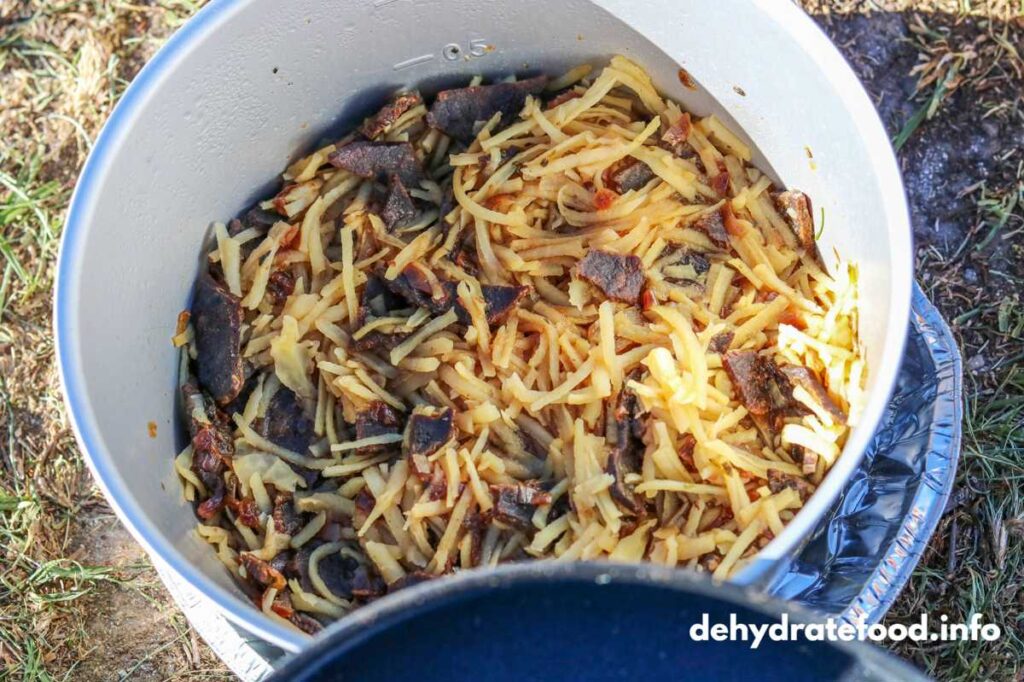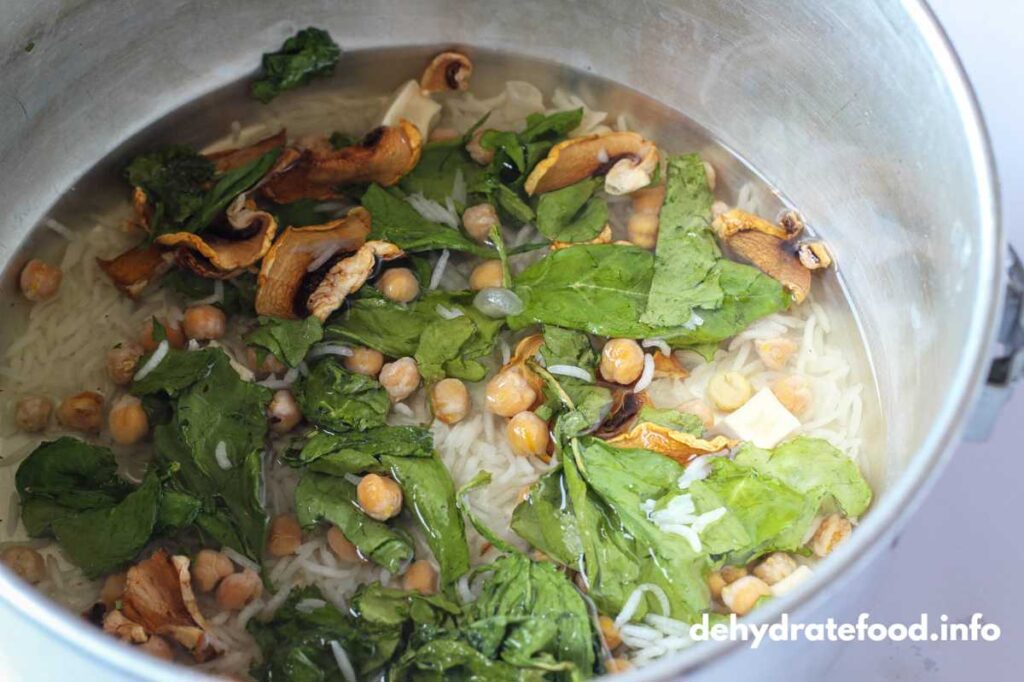
Rehydrate food with cold water
1. Put the dehydrated food, such as dried fruits, vegetables, or meat, into a container with a tight-fitting lid.
2. Pour enough cold water into the container to cover the food completely. The food should submerged in water.
3. Close the container with the lid and let it sit for a while. The time it takes to rehydrate food can vary depending on the type and size of the food. Keep in a cool place.
4. Check the food occasionally to monitor the rehydration process. Stir or shake the container to ensure even rehydration.
5. Once the food is fully rehydrated and has regained its original texture, drain any excess water.
6. Use the rehydrated food immediately in your recipe, or store it in an airtight container in the refrigerator if you don’t plan to use it immediately.
Rehydration brings back the original texture to food. Remember that to rehydrate food with cold water may take longer than hot water, as cold water takes longer to soften the dehydrated food. On the other hand, when using cold water, food is less prone to bacterial growth.
Rehydrate food in hot or cold water?
It’s better to soak in hot liquid for a short time than to soak food in cold liquid for a long time. This is because the risk of bacterial growth increases over time. However, soaking in cold water for a few hours at temperatures below 20°C (68°F) is generally not a problem.
Cold water is good for vegetables, fruit salads and fruit you want to remain firm. Hot water can cause the food to become too soft. Soaking time can vary from a few minutes to several hours, depending on how finely ground and how well-dried the food is and whether you soak in hot or cold water.
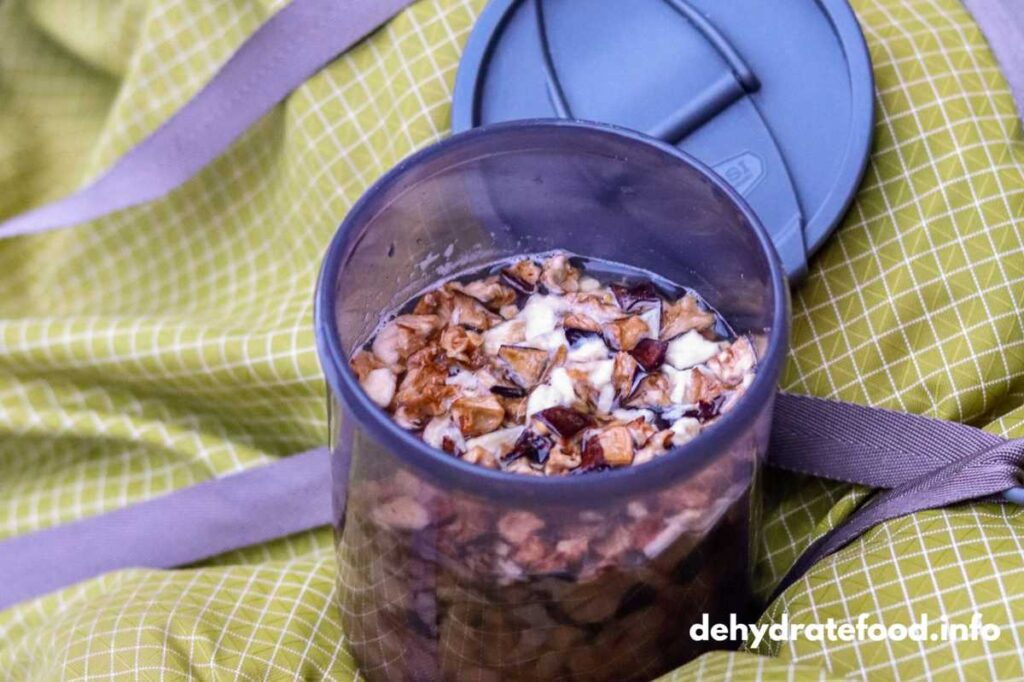
Rehydrate with hot water
1. Select a heat-safe container large enough to hold the food you want to rehydrate.
2. Bring water to a boil in a kettle or on the stovetop. The amount of water you need depends on the type and amount of food you are rehydrating.
3. Place the food in the container and pour the hot water over it. The water level should be enough to submerge the food entirely.
4. Cover the container with a lid or a plate to trap the heat and prevent moisture from escaping.
5. Stir the food occasionally to ensure even rehydration and to prevent clumping.
6. After the recommended rehydration time has passed, taste a small portion of the food to check its texture. If it feels too dry or firm, you may need to let it soak further in the hot water.
7. Once the food has reached the desired texture, carefully drain the excess hot water from the container.
8. The rehydrated food is ready to be served or used in your desired recipe.
